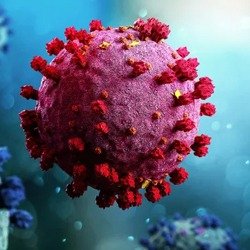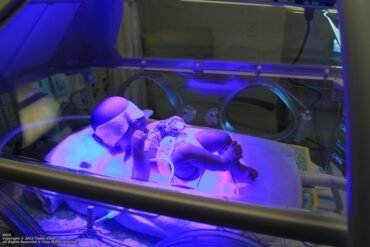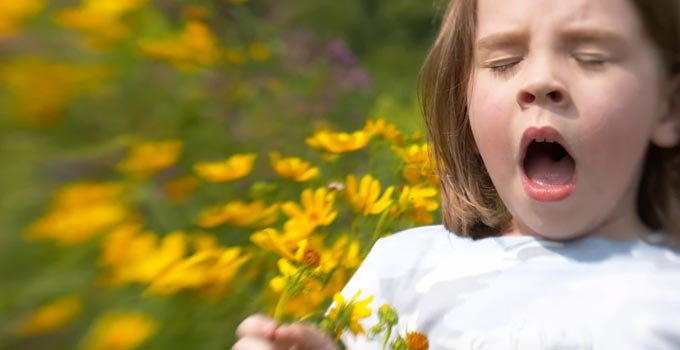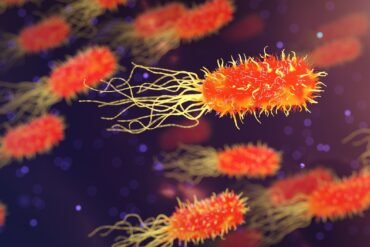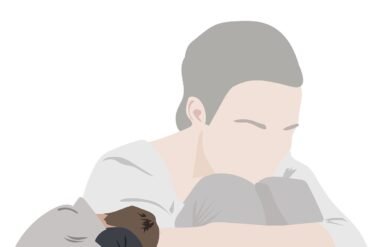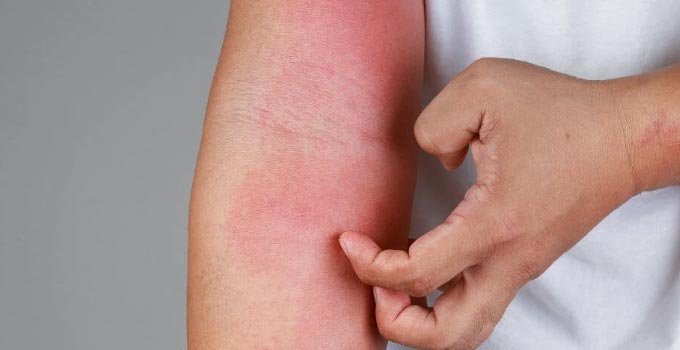Identifying Symptoms of Asthma in Children
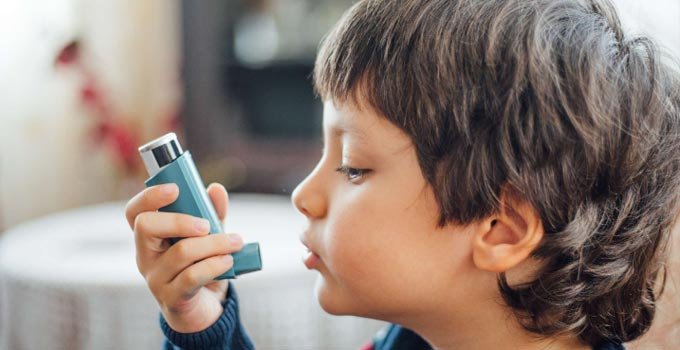
Table of Contents
- Common signs of childhood asthma
- Physical symptoms of childhood asthma
- Behavioral indicators of childhood asthma
- Identifying triggers for childhood asthma
- Seeking medical attention for childhood asthma symptoms
Common Signs of Childhood Asthma
Asthma is a chronic health condition that often develops during childhood. Identifying symptoms of asthma in children is crucial for early diagnosis and effective management. Here are some common signs that may indicate the presence of asthma in children:
- Recurrent episodes of wheezing: Wheezing is a high-pitched whistling sound while breathing caused by narrowed airways. Children with asthma may experience wheezing during physical activities or when exposed to triggers like allergens or cold air.
- Coughing, particularly at night: Frequent nighttime coughing is a common symptom of asthma in children. It may interrupt their sleep and persist despite usual remedies.
- Shortness of breath: Children with asthma often experience difficulty in catching their breath, especially during activities or exercises. Shortness of breath may be accompanied by chest tightness or discomfort.
- Chest congestion or tightness: Asthma can cause a feeling of heaviness or tightness in the chest. Children may describe it as if someone is sitting on their chest or squeezing it tightly.
- Frequent respiratory infections: Children with asthma are prone to developing respiratory infections like colds, flu, or bronchitis more frequently. These infections can trigger asthma symptoms and make them more severe.
- Reduced lung function: As asthma progresses, lung function may become compromised. If your child experiences recurring respiratory symptoms or has a family history of asthma, it is crucial to monitor their lung health through regular check-ups and spirometry tests.
While these symptoms are common in childhood asthma, it is important to consult a healthcare professional for a proper diagnosis. An accurate diagnosis helps in implementing appropriate asthma management strategies, which may include medication, environmental control, and lifestyle adjustments. Early identification and control of symptoms can significantly improve a child’s quality of life and prevent asthma-related complications.
Physical Symptoms of Childhood Asthma
Identifying the symptoms of asthma in children is crucial for early intervention and management of the condition. Asthma is a chronic respiratory disease that affects the airways, causing inflammation and narrowing, leading to symptoms such as coughing, wheezing, shortness of breath, and chest tightness. While the severity and frequency of symptoms can vary from child to child, it is important for parents and caregivers to be aware of the physical signs that could indicate asthma in children.
- Coughing: A persistent cough, particularly at night or after physical activity, can be a sign of asthma. The cough may sound dry, and it can worsen with exposure to allergens or irritants.
- Wheezing: Wheezing is a common symptom of asthma and is characterized by a high-pitched whistling sound when breathing out. It occurs when the airways become narrowed, making it difficult for air to flow freely.
- Shortness of breath: Children with asthma may experience shortness of breath, where they struggle to catch their breath, even during non-strenuous activities. This can lead to a rapid or shallow breathing pattern.
- Chest tightness: A sensation of tightness or discomfort in the chest is another physical symptom of childhood asthma. It may feel as if there is a heavy weight or pressure on the chest.
- Frequent respiratory infections: Children with asthma are more prone to respiratory infections, such as colds, bronchitis, or pneumonia. These infections can trigger asthma symptoms and may last longer than usual.
- Exercise intolerance: Many children with asthma experience difficulty participating in physical activities or sports. They may tire more easily and have a harder time keeping up with their peers.
If your child displays any of these physical symptoms, it is essential to consult a healthcare professional for a proper diagnosis. Early detection and management of childhood asthma can help control symptoms, reduce the frequency of asthma attacks, and improve your child’s quality of life.
Remember, not all children with asthma experience the same symptoms, and the severity can vary. Some children may only have occasional flare-ups, while others may experience daily symptoms. Therefore, it is crucial to be vigilant and observant of any changes in your child’s breathing patterns or overall health.
Behavioral Indicators of Childhood Asthma
Asthma is a chronic respiratory condition that commonly affects children. It is crucial for parents, caregivers, and healthcare providers to recognize the behavioral indicators that may suggest the presence of asthma in children. Early identification and intervention can help manage and control asthma effectively. Here are some essential behavioral indicators to look out for:
- Coughing: Frequent coughing, particularly during the night or after physical activity, can be a sign of asthma in children. Pay attention if the cough seems persistent or if it interrupts the child’s sleep.
- Wheezing: Wheezing is a high-pitched whistling sound that can occur when the airways become narrowed due to inflammation in the lungs. It is a classic symptom of asthma and may be more noticeable during exhalation.
- Shortness of breath: Children with asthma often experience difficulty breathing or a feeling of breathlessness. They may struggle to catch their breath, especially during or after physical exertion or exposure to triggers.
- Chest tightness: Asthmatic children may complain of chest tightness or discomfort. They might hold their chest or ribs while breathing or mention that it feels like “someone is sitting on their chest.”
- Frequent respiratory infections: Children with asthma tend to have more frequent and severe respiratory infections, such as colds, bronchitis, or pneumonia. These infections can trigger asthma symptoms or exacerbate pre-existing ones.
- Reduced physical activity: If a child with previously normal activity levels suddenly becomes less active or avoids physical exertion, it might indicate asthma. They may also appear tired or fatigued more often than usual.
- Mood changes: Asthma can affect a child’s mood and behavior. Irritability, restlessness, or poor concentration may be observed, especially during episodes of asthma symptoms or when asthma is uncontrolled.
These behavioral indicators are not exclusive to asthma but can serve as red flags. If you notice these symptoms consistently or if you have concerns about your child’s respiratory health, it is essential to consult a healthcare professional for an accurate diagnosis. Asthma management strategies, including appropriate medications, environmental control, and an asthma action plan, can help children with asthma lead a healthy and active life.
Identifying Triggers for Childhood Asthma
When it comes to managing childhood asthma, one of the key steps is to identify the triggers that can potentially worsen symptoms. By being aware of these triggers, parents, caregivers, and healthcare professionals can take necessary precautions and make informed decisions to create a safe and healthy environment for the child. Here are some common triggers to look out for:
- Allergens: Allergens such as pollen, pet dander, dust mites, and mold can trigger asthma symptoms. Keeping the child’s living space clean and reducing exposure to these allergens can help minimize flare-ups
- Respiratory Infections: Viral respiratory infections, including the common cold, flu, or respiratory syncytial virus (RSV), can aggravate asthma symptoms. Good hygiene practices like regular handwashing and avoiding close contact with sick individuals can be beneficial.
- Tobacco Smoke: Exposure to tobacco smoke, whether directly or secondhand, can be extremely harmful to children with asthma. It is important to create a smoke-free environment and ensure the child is not exposed to smoke.
- Exercise: While exercise is essential for overall health, it can trigger asthma symptoms in some children. By working closely with healthcare professionals, parents can develop an asthma action plan that enables the child to participate in physical activities while minimizing the risk of an asthma attack.
- Environmental Factors: Certain environmental conditions like cold air, air pollution, strong odors, and even weather changes can act as triggers for asthma symptoms. Paying attention to these factors and taking necessary precautions, such as using a scarf to cover the nose and mouth in cold weather, can help reduce the likelihood of exacerbations.
Identifying triggers for asthma in children requires close observation and monitoring. Keeping a diary of symptoms, activities, and exposures can assist in recognizing patterns and identifying potential triggers. It is always beneficial to involve healthcare professionals who can provide guidance, perform tests, and help in understanding and managing these triggers effectively.
Seeking Medical Attention for Childhood Asthma Symptoms
Identifying symptoms of asthma in children is crucial for timely intervention and effective management of this chronic respiratory condition. It is important to recognize these symptoms early on and seek medical attention promptly to ensure the well-being and quality of life of a child with asthma. Here are some signs to watch out for and steps to take if your child is exhibiting these symptoms:
- Recurrent coughing, especially during physical activity or at night.
- Wheezing or a whistling sound when breathing.
- Rapid breathing or shortness of breath, which may cause the child to avoid activities or appear fatigued.
- Chest tightness or discomfort.
- Frequent respiratory infections or colds that quickly affect the lungs.
- Breathing difficulties triggered by allergens such as pollen, dust mites, animal dander, or certain foods.
- Difficulty sleeping due to coughing, wheezing, or breathlessness.
If your child experiences any of these symptoms, it is crucial to consult a healthcare professional as soon as possible. The first step in seeking medical attention involves a visit to your child’s primary care physician or a pediatrician. The healthcare provider will likely perform a thorough physical examination, ask about your child’s medical history, and may recommend additional diagnostic tests. These tests may include lung function tests, such as spirometry, to assess how well your child’s lungs are functioning.
Based on the severity and frequency of symptoms, your child’s healthcare provider may diagnose asthma or refer you to a pediatric pulmonologist or an allergist for further evaluation. These specialists can provide more specialized care and treatment options, including long-term management plans and prescription medications. They can also help identify and address triggers that worsen your child’s symptoms, offering guidance on lifestyle changes and environmental modifications to minimize asthma attacks.
Remember, effective management of childhood asthma requires a collaborative effort between healthcare professionals, parents, and the child themselves. Regular follow-up visits with the healthcare team are essential to monitor your child’s asthma control, adjust treatment plans if necessary, and educate both you and your child about asthma self-management techniques. By taking prompt action and seeking appropriate medical attention, you can help your child lead a healthy and active life, ensuring their asthma is well-managed and their symptoms are minimized.

